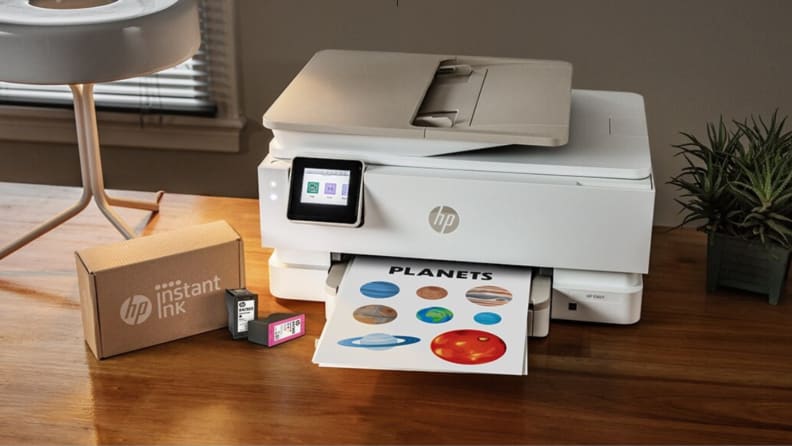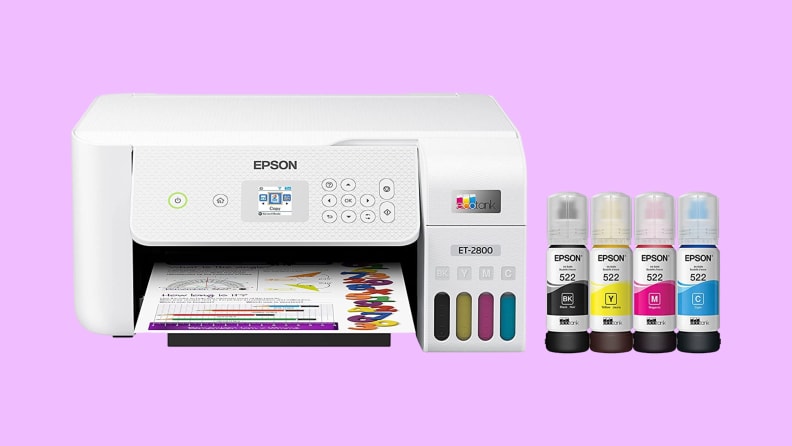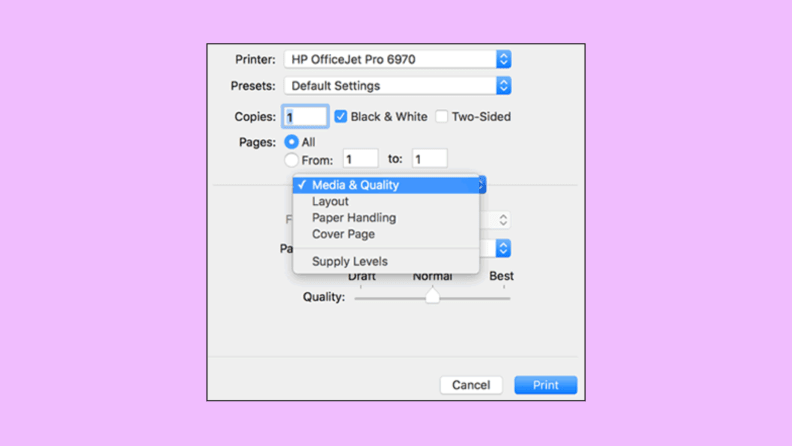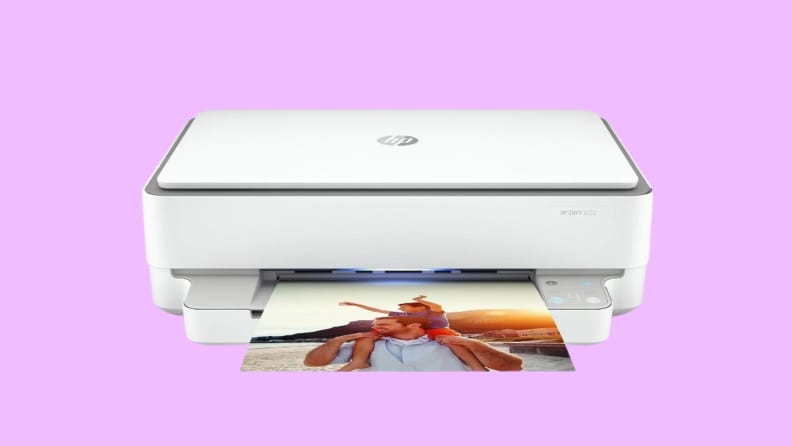Products are chosen independently by our editors. Purchases made through our links may earn us a commission.
In certain cases for work, school, and even personal projects, printing can get expensive, especially if you’re trying to print in color or on glossy photo paper. Even if you’re working with a top-of-the-line printer, there are plenty of clever ways to save on printing costs so you can still get the documents you need while not breaking the bank to do it.
1. Consider an ink or toner subscription service

Never run low on ink again—and save a trip to the office supply store.
There are ink and toner subscription services like HP Instant Ink that can save you up to 50% on printing costs over time—and you can currently get a $10 credit on the service. You’ll get high-quality HP ink cartridges or toner delivered to you at a frequency determined by your personal printing needs.
Pay a small monthly fee, and each cartridge holds more ink than a traditional cartridge so you’ll need to replace it less often, meaning you won’t need to make a trip to the store to buy a new cartridge when you need one. And since your plan is based on how many pages you print per month, not how much ink you use, printing in color will cost you the same as printing in black and white. The service is compatible with most HP printers made in the last five years that have Wi-Fi. You can even add-on paper pack deliveries, too. Sign up for HP Instant Ink
2. Opt for a refillable ink printer

Swap out one-time use ink cartridges for refillable reservoirs.
Refillable ink printers like this Epson EcoTank model use ink reservoirs rather than cartridges. Each one comes with an up to two-year supply of ink in the box. When you need to refill the reservoirs, only fill the colors that are empty or running low. A package of refillable ink is comparable in cost to a new ink cartridge, yet you’ll be replacing it far less often. I have been using an Epson EcoTank printer for more than five years with light to moderate printing needs and have only had to buy replacement ink bottles twice. $200 on Amazon
3. Use double sided printing

Use both sides of paper to reduce your sheet usage.
Make use of double-sided printing when possible, especially when printing draft pages of text for review that you don’t need to keep. Even for reports and other content, making use of both sides of the paper with a printer that accommodates double-sided printing (or by feeding the paper back in upside down) means you’re using half the paper you normally would, thus cutting your costs by 50%.
4. Switch to draft print quality

Take advantage of this setting when you don’t need a high-resolution print job.
Most, if not all, printers have a print quality setting option. If you aren’t printing high-resolution color documents and files, or something that needs to look professional for distribution, change the setting to draft print quality. This setting, ideal for things like worksheets, notes, or documents you need to print for editing, uses less ink. The text won’t be as dark and vivid, but you might not need it to be.
5. Print multiple pages on one sheet
There’s an option in every printer under Layout to print one sheet per page, or more. If you’re printing content to review and there isn’t a ton of text, you might be able to get away with printing two or more pages per sheet while still getting legible (albeit smaller) copy. If you are reviewing things like PowerPoint or Google Slides, you might even be able to print six-to-eight slides per page. This drastically reduces the number of pages (and ink) needed per print job.
6. Reuse paper for scrap
After you’re done with single-sided prints, staple them together, flip them over, and use them for scrap. It’s great for working out math problems, jotting down phone numbers or notes from a phone call, sketching ideas, and making to-do lists. Hand these papers over to kids for art projects, to practice coloring, drawing, working on homework, and more. With the underside of single-sided prints blank, it’s ripe for being used before you toss it into the recycling.
7. Don’t print in color
If you have a color printer and it’s set to color prints as default, adjust to grayscale when you’re printing a color document but don’t need the color. This will save ink usage on other colors, extending the life of the cartridge. Then revert to color only when you need it, for final prints for a brochure, for example, or a printed presentation.
8. Only print what you need

Cut the portions of information you don’t need to make your print job much smaller.
If you’re printing a long email string to get only a portion of the text, select only which pages you need and print those. Another option is to copy and paste the bits and pieces you need into a Word or Google document, reducing font size if necessary and printing that to reduce the amount of ink and paper you use. Eliminating extraneous details like the sender name, recipient name, email subject line, and the person’s signature can easily shift a print job from 5 pages to 2.
9. Use proper ink cartridges from reputable sources
It can be tempting to buy discount ink from a seller that purports to save you money. But these cartridges sometimes aren’t as efficient, don’t yield as many pages, and in some cases, can even potentially damage the printer. Some manufacturers will not cover a printer warranty if you have used a third-party ink cartridge, so keep this in mind.
While it will cost a bit more upfront, use print cartridges from the manufacturer itself that are designed for use in the specific printer model you own, or third-party ones that are approved for use. You could, for example, seek out remanufactured cartridges or recycled and refurbished ones that are verified to meet quality standards. Just be careful of the source and confirm that you’re getting a quality product.
10. Reconsider your printer

A new printer may be the solution.
You might have gotten a printer for a fabulous deal and thought you lucked out, only to realize that you have already paid for the cost of the hardware ten times over in ink. It’s a tough pill to swallow, but printers are what are known as loss leaders: sold for less while the company recoups its investment through the recurring cost of ink. A similar strategy is found with products like razors and razor blades and even gaming consoles.
Consider upgrading to a well-reviewed printer that yields more prints per page (ppm), like our top pick, the HP OfficeJet Pro 8034e. It might be more expensive upfront but it will save you money in the long run.


